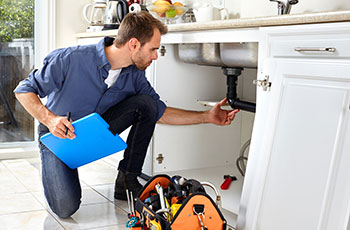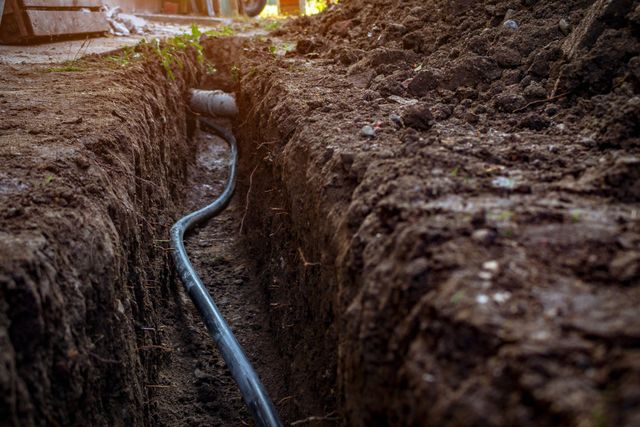How do you actually feel with regards to How Does the Plumbing Work in Your Home??

Plumbing is an essential aspect of any kind of home, in charge of providing tidy water for drinking, cooking, and showering, along with removing wastewater securely. Understanding the basics of home plumbing is essential for each homeowner to make sure correct maintenance, troubleshooting, and, if needed, fixings. In this newbie's guide, we'll cover the fundamental ideas of home plumbing to assist you end up being extra knowledgeable about how it works.
Water System
The water system system brings tidy water into your home from a municipal water resource or a personal well. It consists of a primary water line that connects to your home's plumbing system, normally located underground. A water meter gauges the amount of water eaten, while a shut-off shutoff allows you to manage the flow of water right into your home.
Plumbing Fixtures
Plumbing fixtures are tools that provide water to various parts of your home and consist of sinks, taps, toilets, showers, bath tubs, and appliances such as dish washers and washing equipments. Each fixture is linked to the water supply system by means of pipes and fittings and may have its shut-off shutoff for maintenance or emergencies.
Water Furnace
The water heating unit is in charge of heating water for domestic usage, including bathing, food preparation, and cleaning. Typical sorts of hot water heater include tank-type water heaters, tankless (on-demand) hot water heater, and heatpump water heaters. The hot water heater is attached to the water supply system and provides hot water to plumbing components as required.
Drainage System
The drain system eliminates wastewater from your home and brings it away to a sewer therapy center or septic system. It consists of a network of pipes, installations, and components that move wastewater from plumbing components to the main drain line or sewage-disposal tank. Correct water drainage is essential to avoid blockages, back-ups, and sewage leaks.
Ventilation System
The ventilation system assists preserve appropriate atmospheric pressure and protect against sewage system gases from entering your home. Air vent pipelines, also referred to as vent heaps, prolong from plumbing components to the roof covering, permitting sewer gases to escape safely outdoors. Air flow pipes likewise enable air to enter the drainage system, helping with smooth wastewater flow and stopping suction or vacuum effects.
Common Plumbing Tools
Having the right tools handy is important for doing fundamental plumbing fixings and upkeep jobs. Common plumbing tools consist of adjustable wrenches, pipe wrenches, pliers, pipeline cutters, hacksaws, bettors, augers (or drainpipe snakes), and Teflon tape. Having these devices conveniently offered can help you tackle small plumbing problems effectively.
Standard Plumbing Repairs
While some plumbing repair work might call for expert support, several typical issues can be resolved with standard do it yourself strategies. Understanding just how to take care of a leaky faucet, unblock a drain, replace a bathroom flapper, or fix a dripping showerhead can save you money and time on plumbing repair services.
Final thought
Understanding the essentials of home plumbing is necessary for every single house owner to maintain a secure, functional, and reliable plumbing system. By familiarizing on your own with the water system system, plumbing fixtures, water drainage system, ventilation system, common plumbing devices, and basic fixings, you can confidently deal with minor plumbing issues and guarantee your home's plumbing system operates efficiently.
Understanding Basics of Home Plumbing System: A Beginner's Guide
The Main Components of Your Home Plumbing System
The Water Supply System
This system is responsible for transporting fresh water into your home. It usually has a main water line that splits into two branches: one directed towards cold water services and the other connected to a water heater for hot water. The pressure is key here; it ensures water reaches all parts of your house.
The Drainage System
Once water has been used, it becomes wastewater that needs to be removed from your home. This is where the drainage system comes into play. It includes all the pipes that carry wastewater and sewage away from your house to sewage treatment facilities or septic tanks.
The Vent System
The vent system prevents sewer gases from entering your home and helps maintain the pressure balance that allows wastewater to flow out properly. These vents usually exit through the roof of your house.
Water Heating System
For those who enjoy hot showers or using hot water for cleaning, the water heater is a crucial part of the plumbing system. It can be a tankless system, which heats water on demand, or a traditional water tank model.
Common Plumbing Problems and Basic Troubleshooting
Plumbing systems, while designed to be durable, can face issues like clogged drains, leaky faucets, or low water pressure. Here are some basic troubleshooting tips:
Clogged Drains
Use a plunger or a plumber's snake to try and dislodge whatever is blocking the drain. Regular cleaning can prevent clogs.
Leaky Faucets
Often caused by worn-out washers or gaskets, these can usually be replaced by someone with basic DIY skills.
Low Water Pressure
This might be due to sediment build-up in your fixtures or a leak somewhere in your water line. Cleaning out aerators or seeking a professional to detect leaks might be necessary.
Preventive Maintenance Tips
Maintaining your plumbing system is key to avoiding emergencies. Regularly check for leaks, avoid disposing of grease down the sink, and have your system inspected by a professional plumber at least once a year.

I'm certainly very excited about Plumbing Basics Every Homeowner Should Know and I hope you enjoyed the entire article. I beg you pause to distribute this blog entry if you enjoyed it. Thank-you for taking the time to read it.
Call Today